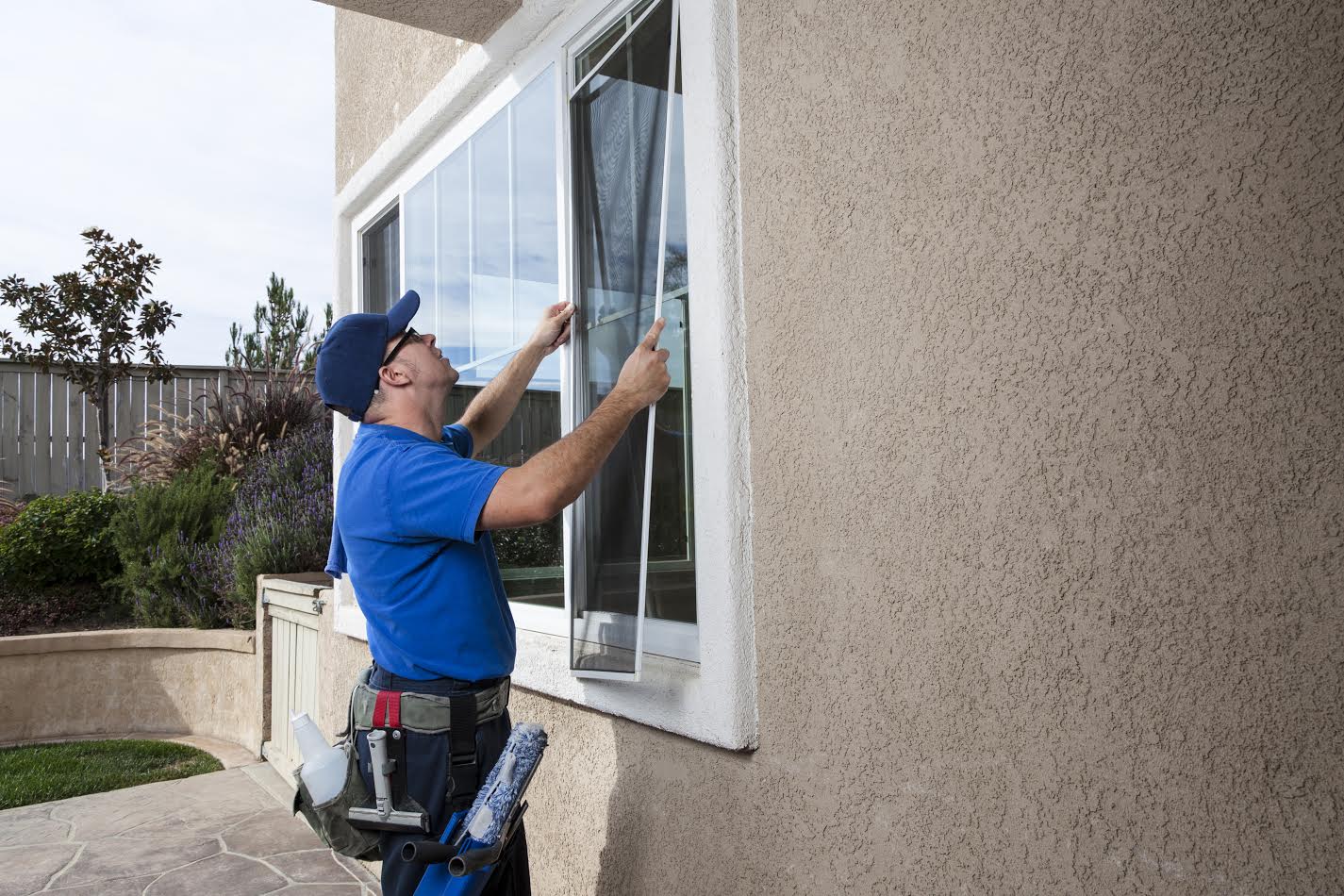A pro guide to safely cleaning window screens
If you're looking to clean your home windows or commercial windows, then you need the window Screen Clean. Cleaning window screens can seem like a daunting task - especially if you're not sure where to begin. In this guide, we'll walk you through all the steps necessary for properly and professionally cleaning your window screens so that they remain dust-free and look like new.
First, remove your window screens
Your window screens should first be entirely removed from the frames. Never try to clean the screens inside the frame because you risk pushing dirt and debris into the cracks of your window casing and risking water damage to the surroundings around your home.
To make putting them back in place afterward easier, you should mark each screen as you remove it, along with the hardware it corresponds to. Label each screen with a number to accomplish this; we advise using removable masking tape. Put any hardware in a numbered plastic bag.
After that, bring the screens outside and set them up on a surface like your patio or parkway. We advise against doing this on grass because you will only end up adding extra particles to your screen and making a mess.
Gather the necessary cleaning supplies
Before you begin cleaning your window screens, make sure you have all the necessary supplies - a clean cloth, detergent or soap solution, soft brushes, baking soda, a sponge, and a vacuum cleaner. If there's any stubborn dirt or buildup on the window screens, you may also want to grab some steel wool or fine sandpaper as well.
Wet the window screen with warm water
Start by wetting the window screen with warm water, and filling a bucket with warm water and mild detergent or specially formulated window cleaner spray like Windex Outdoor Window Cleaner to tackle tougher stains on the windows themselves either with your cleaning cloth or a garden hose. This will help reduce any dirt and grime on the surface of your screens, making it easier to clean them efficiently. If you've got particularly stubborn dirt and buildup, help loosen them up before beginning the cleaning process. Dip a soft cloth into the solution, wringing out most of the liquid, then wipe down all exterior surfaces of each individual screen in an up-and-down motion starting at the top corner and going downwards, then finish off with a circular buffing motion to replicate drying action with a squeegee.
Scrub the window screen gently with a soft brush or toothbrush
Use a soft-bristled brush or toothbrush to scrub away any dirt, debris, and buildup from your window screen. Make sure to focus on the corners and smaller sections of the screen, where dirt accumulates more easily. For tougher grit, use a bit of rubbing alcohol or an all-purpose cleaner to help lift any build-up before you start scrubbing. Be gentle and take your time; you don't want to damage the window screens by being too aggressive with the brush.
Rinse off the suds with a hose or a spray bottle of clean water, then dry it off with a lint-free cloth.
After scrubbing your window screen with a brush and cleaner of your choice, make sure to thoroughly rinse off the soap suds. If you're using a hose, focus on the flat surface first and then move on the corners. To avoid water spots or damage to delicate frames, use a spray bottle instead so that you can control the strength of the stream of water. Finish up by drying your window screen with a lint-free cloth to prevent any unsightly streaks from forming. After finishing cleaning, reinstall your window screen.
Window cleaning some tools for your need
If you have mildew on your screen, try using a strong bleach solution in place of the vinegar and water mixture. Add two cups of bleach to one gallon of water and scrub with a brush until all traces are gone. You may need to add another dose if there are still visible spots after scrubbing with the brush and if you want to remove rust stains from your screen, use an old toothbrush to apply some vinegar-based cleanser onto the affected areas along with a little elbow grease (and patience). Once it's dry, rub some WD-40 onto it so that it doesn't become rusty again during rain storms or other harsh weather conditions.
If you have a power washer, it's best to use this for cleaning the screen. It will be more effective than just using a regular brush, and it will also save time because you don't have to walk around and clean the area yourself.
These cleaning tips are simple and cost-efficient for the job. These tips for keeping your window screens clean will help you enjoy your windows; clean screens make it easier for light to through, which means that you can let the sunshine in during the daytime without having to worry about dirt getting on your furniture and floors. As well as your house will be clean. There is no doubt that professionally cleaning your window screens can make all the difference in how well the air circulates through your home. If you want the best for your family, then it's well worth making sure that professionals are brought in to do this important job.
